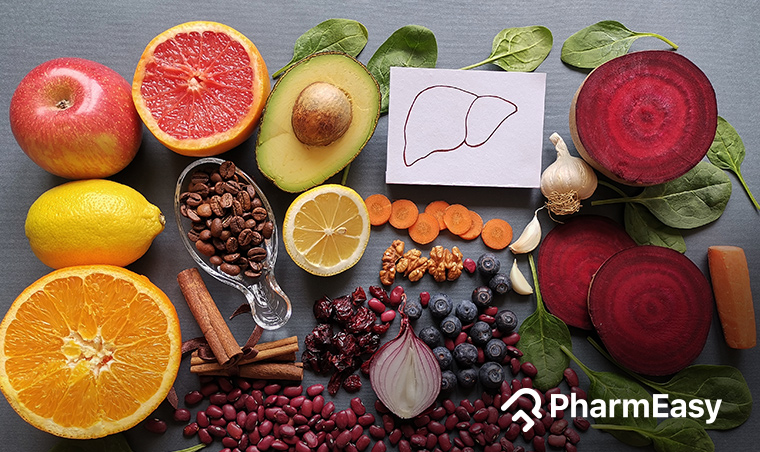Introduction: Liver cirrhosis is a progressive and irreversible condition characterized by the scarring of liver tissue. While medical interventions are essential, naturopathic approaches can play a vital role in supporting liver health, managing symptoms, and improving quality of life. In this comprehensive article, we delve into the principles of naturopathic management for liver cirrhosis, exploring dietary strategies, herbal remedies, lifestyle modifications, and mind-body practices.
Causes of Liver Cirrhosis: Unraveling the Underlying Factors
Liver cirrhosis is a complex and progressive condition that develops due to various factors leading to irreversible scarring of liver tissue. Understanding the underlying causes is crucial for effective management and prevention. In this section, we explore the primary causes of liver cirrhosis and the impact they have on liver health.

1. Chronic Alcohol Consumption: Excessive and long-term alcohol consumption is a leading cause of liver cirrhosis. Alcohol damages liver cells, disrupts their function, and triggers inflammation, ultimately leading to fibrosis and scarring.
2. Viral Hepatitis: Chronic infection with hepatitis B or C viruses can cause persistent liver inflammation, leading to cirrhosis over time. These viruses directly damage liver cells and hinder their ability to regenerate.
3. Non-Alcoholic Fatty Liver Disease (NAFLD): NAFLD occurs when excess fat accumulates in the liver, often due to obesity, unhealthy diet, and sedentary lifestyle. If left untreated, it can progress to cirrhosis.
4. Autoimmune Hepatitis: In autoimmune hepatitis, the immune system mistakenly attacks liver cells, causing inflammation and damage. Over time, this can result in cirrhosis.
5. Hemochromatosis: This genetic disorder leads to excessive iron accumulation in the liver and other organs, damaging liver cells and promoting fibrosis.
6. Wilson’s Disease: A rare genetic disorder that leads to copper buildup in the liver, causing damage and inflammation.
7. Biliary Atresia: A congenital condition where bile ducts are improperly formed, leading to bile accumulation in the liver and cirrhosis, particularly in infants.
8. Medications and Toxins: Prolonged exposure to certain medications, industrial chemicals, and toxins can damage liver cells and contribute to cirrhosis.
Symptoms of Liver Cirrhosis: Recognizing the Signs
Liver cirrhosis often develops gradually, and its symptoms may not be immediately noticeable. However, as the condition progresses, various signs and symptoms may manifest, indicating compromised liver function. Recognizing these symptoms is vital for early detection and timely intervention. In this section, we explore the common symptoms associated with liver cirrhosis.

1. Fatigue and Weakness: Generalized fatigue and weakness are common due to the liver’s reduced ability to process nutrients and produce energy.
2. Jaundice: Yellowing of the skin and eyes (jaundice) occurs when the liver cannot effectively process bilirubin, leading to its accumulation.
3. Swelling and Fluid Retention: Cirrhosis can cause fluid retention, leading to swelling in the legs, ankles, and abdomen (ascites).
4. Easy Bruising and Bleeding: A damaged liver produces fewer clotting proteins, leading to easy bruising and prolonged bleeding.
5. Itchy Skin: Bilirubin buildup in the bloodstream can cause itching and discomfort on the skin.
6. Digestive Issues: Cirrhosis affects digestion, leading to loss of appetite, nausea, vomiting, and weight loss.
7. Mental Confusion and Forgetfulness: Known as hepatic encephalopathy, this condition arises when toxins accumulate in the bloodstream and affect brain function.
8. Spider Angiomas: These are small, visible blood vessels that resemble spider legs and often appear on the skin due to hormonal imbalances caused by cirrhosis.
9. Increased Sensitivity to Medications: A damaged liver may have difficulty metabolizing medications, leading to adverse effects or reduced effectiveness.
10. Dark Colored Urine and Pale Stools: Bilirubin accumulation can lead to dark urine, while pale stools may result from insufficient bile reaching the intestines.
Naturopathic Approaches for Liver Cirrhosis
Holistic Healing Philosophy Naturopathy emphasizes treating the root cause of diseases and promoting the body’s inherent healing mechanisms. This approach aligns with supporting liver health through natural means.

1. Nutritional Support:
- Liver-Friendly Diet: A balanced diet rich in fruits, vegetables, whole grains, lean proteins, and healthy fats supports liver function and detoxification.
- Herbal Supplements: Certain herbs like milk thistle, dandelion, and turmeric are known for their hepatoprotective properties.
- Hydration: Ample water intake assists in flushing toxins and maintaining optimal liver function.
2. Hydrotherapy:
- Hot and Cold Compresses: Alternating hot and cold compresses applied to the liver area stimulate circulation and support detoxification.
- Contrast Hydrotherapy: Alternating hot and cold showers improve blood flow and lymphatic drainage.
3. Herbal Medicine:
- Milk Thistle (Silybum Marianum): Supports liver regeneration, detoxification, and protects liver cells from damage.
- Dandelion Root (Taraxacum Officinale): Aids digestion, promotes bile flow, and supports liver function.
- Turmeric (Curcuma Longa): Known for its anti-inflammatory and antioxidant properties, turmeric supports liver health.

4. Hydrotherapy:
- Castor Oil Packs: Applying castor oil packs over the liver area can promote detoxification and reduce inflammation.
- Sauna Therapy: Induces sweating and aids in eliminating toxins from the body.
5. Mind-Body Techniques:
- Stress Reduction: Mindfulness, meditation, and relaxation techniques can reduce stress and its impact on the liver.
- Yoga: Specific yoga poses and breathing exercises promote circulation, digestion, and relaxation.
6. Acupuncture:
- Energy Balance: Acupuncture sessions aim to restore the body’s energy balance and support liver function.
- Stress Reduction: Acupuncture can reduce stress, which is beneficial for overall well-being.
7. Detoxification Protocols:
- Colon Cleansing: Enemas or colonics can assist in eliminating waste and toxins from the body.
- Liver Flushes: Certain protocols involve consuming specific foods or substances to stimulate liver detoxification.

8. Mind-Body Practices:
- Biofeedback: Biofeedback techniques can help manage stress and promote relaxation.
- Visualization: Guided imagery can positively impact the liver and overall health.
9. Lifestyle Modifications:
- Weight Management: Achieving and maintaining a healthy weight reduces stress on the liver.
- Physical Activity: Regular exercise improves circulation, metabolism, and overall well-being.
- Sleep Hygiene: Prioritizing restful sleep supports liver regeneration and overall health.
Dietary Strategies
- Liver-Friendly Diet: Focus on whole foods, ample fruits, vegetables, lean proteins, and healthy fats.
- Limiting Toxins: Reducing alcohol, processed foods, and trans fats minimizes the strain on the liver.
- Hydration: Drinking sufficient water supports detoxification and digestion.
Herbal Remedies for Liver Health
Milk Thistle (Silybum Marianum)
- Antioxidant Power: Protects liver cells from damage caused by oxidative stress.
- Stimulates Regeneration: Supports the growth of new liver cells.
- Detoxification Support: Enhances liver’s ability to remove toxins.
Dandelion Root (Taraxacum Officinale)
- Bile Flow: Supports bile production, aiding digestion and detoxification.
- Anti-Inflammatory: Reduces inflammation in the liver.
- Diuretic Effect: Promotes fluid balance and waste elimination.

Lifestyle Modifications for Liver Health
Exercise and Physical Activity
- Metabolic Health: Improves insulin sensitivity and weight management.
- Circulation: Enhances blood flow to the liver for optimal function.
- Stress Reduction: Reduces stress’s impact on the liver.
Sleep Hygiene
- Restorative Sleep: Supports liver regeneration and detoxification.
- Circadian Rhythm: Maintaining a regular sleep schedule benefits liver health.
Mind-Body Practices for Liver Wellness
Stress Management
- Stress-Liver Connection: Chronic stress impacts liver function.
- Mindfulness and Meditation: Reduces stress and supports liver health.
- Breathwork: Deep breathing techniques aid relaxation and detoxification.
Yoga for Liver Health
- Twisting Poses: Improve blood circulation to the liver.
- Forward Bends: Enhance digestion and stimulate liver function.
- Relaxation: Yoga reduces stress and promotes overall well-being.

Collaboration and Consultation
Integrating Naturopathy with Medical Care
Naturopathic approaches complement conventional medical treatments, offering a holistic and supportive framework for managing liver cirrhosis.
Seeking Professional Guidance
Consulting a licensed naturopathic doctor ensures tailored treatment plans, safety, and proper integration with medical care.
Yogic Management for Liver Cirrhosis: Nurturing Liver Health Through Asanas
Liver cirrhosis can be supported and managed through various yogic practices that promote liver function, circulation, and overall well-being. Yogasanas, or yoga postures, can play a significant role in improving liver health and alleviating some of the symptoms associated with cirrhosis. In this section, we delve into the yogic management for liver cirrhosis, focusing on specific asanas that can contribute to better liver health and vitality.
**1. Sarvangasana (Shoulder Stand):
- Benefits: Increases blood flow to the liver, promoting detoxification and better liver function.
- Method: Lie on your back, lift your legs up, and support your lower back with your hands. Raise your legs and trunk to create a straight line, keeping the chin tucked into the chest.

**2. Matsyasana (Fish Pose):
- Benefits: Stretches the abdominal region and promotes improved digestion.
- Method: Lie on your back, lift your chest, arch your back, and support yourself with your forearms and elbows while maintaining a gentle backbend.

**3. Bhujangasana (Cobra Pose):
- Benefits: Stretches the abdominal muscles, improves digestion, and stimulates liver function.
- Method: Lie on your stomach, place your palms beside your shoulders, and gently lift your upper body while keeping your lower body grounded.

**4. Dhanurasana (Bow Pose):
- Benefits: Massages the abdominal organs, improves digestion, and stimulates the liver.
- Method: Lie on your stomach, bend your knees, reach back to hold your ankles, and lift your chest and legs off the ground.
**5. Ardha Matsyendrasana (Half Spinal Twist):
- Benefits: Promotes digestion, massages the abdominal organs, and increases blood circulation to the liver.
- Method: Sit with your legs extended, bend one knee and place the foot outside the opposite thigh. Twist your torso towards the bent knee while using your opposite hand for support.
**6. Pranayama (Breathing Exercises):
- Benefits: Deep breathing techniques enhance oxygen supply, support detoxification, and reduce stress.
- Method: Practice deep and controlled breathing, focusing on full inhalations and exhalations.

**7. Shavasana (Corpse Pose):
- Benefits: Promotes relaxation, reduces stress, and allows the body to rejuvenate.
- Method: Lie on your back, arms by your sides, and focus on conscious relaxation.
Understanding Liver Cirrhosis
Unraveling the Complexities: Liver cirrhosis occurs due to long-term damage and inflammation, leading to the replacement of healthy liver tissue with scar tissue. This compromises liver function, impacting digestion, detoxification, and metabolic processes.
Causes and Risk Factors: Chronic alcohol consumption, viral hepatitis, non-alcoholic fatty liver disease, and autoimmune conditions are common factors contributing to cirrhosis. Lifestyle choices, genetic predisposition, and environmental toxins also play a role.
Conclusion: Embracing Holistic Liver Health
Naturopathic management for liver cirrhosis involves a comprehensive approach that encompasses dietary choices, herbal support, lifestyle modifications, and mind-body practices.Understanding the causes and symptoms of liver cirrhosis is pivotal for early detection, intervention, and effective management. Yogic management for liver cirrhosis involves gentle and mindful practice. Consult a certified yoga instructor before starting any new practice, especially if you have medical conditions.




